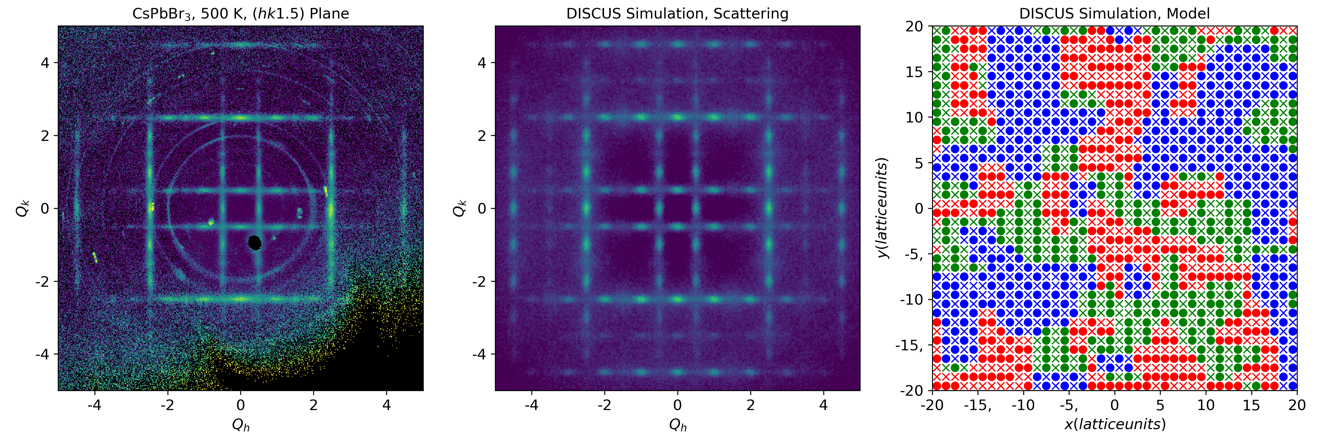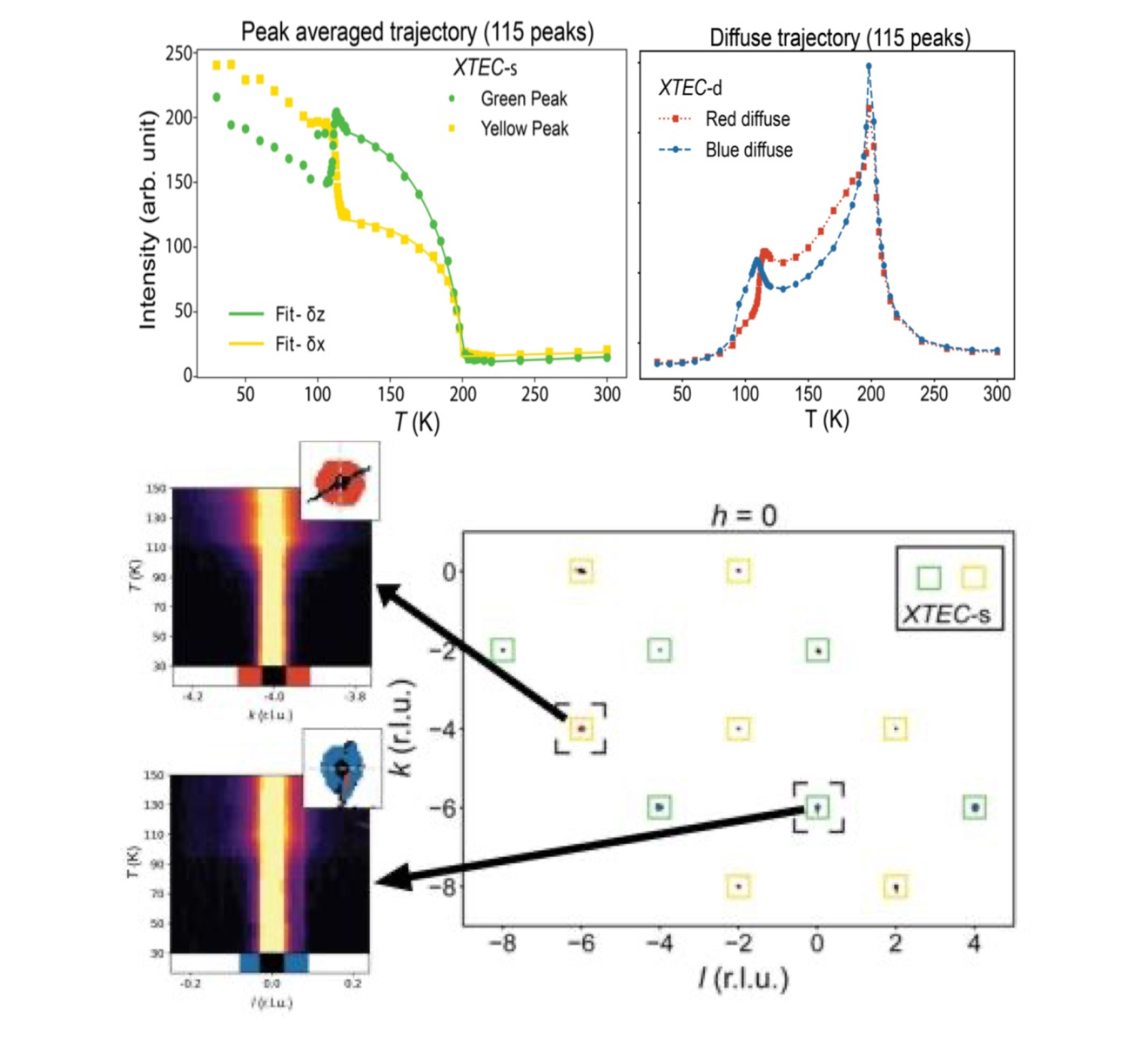Our group plays an active and important role in expanding the capabilities of existing instrumentation and developing novel instrumentation and methods. These enable our investigations of the relation of local disorder and short-range correlations embedded in crystalline materials to their properties of importance for future energy technologies
Single-Crystal Diffuse Scattering
Our group led the development of novel single-crystal diffuse neutron and synchrotron X-ray scattering techniques, which have the potential for broad impact in determining the relations between local correlations on the nano- and mesoscale and emergent physical phenomena. These efforts led to the development and funding of the CORELLI single-crystal diffuse scattering instrument at the Spallation Neutron Source (SNS) at Oak Ridge National Laboratory (https://neutrons.ornl.gov/corelli).
3D-ΔPDF Analysis
The availability of scattering intensities from single crystals over large volumes of momentum transfer enables transformation into three-dimensional pair-distribution functions (3D-PDF) via Fourier transforms. By subtracting the Bragg peak intensities from the observed data before performing the transforms, we obtain the 3D-ΔPDF, which is the probability of a two-particle pair vector with respect to the average structure.
Machine Learning and Spectral Analysis of Large Sets of Diffuse Scattering Data
We develop and utilize advanced computational tools for efficient analysis of large sets of single-crystal X-ray and neutron scattering data. These developments allow us to ensure that data reduction and analysis keep pace with the speed of data collection possible at modern, high-brightness light sources, such as the Advanced Photon Source at Argonne. They also provide completely novel modes of probing subtle structural correlations, providing insight on how such “hidden order” affects material properties.
Further information can be found in the home page for the Analysis of X-rays with Machine Learning and Statistics project.

